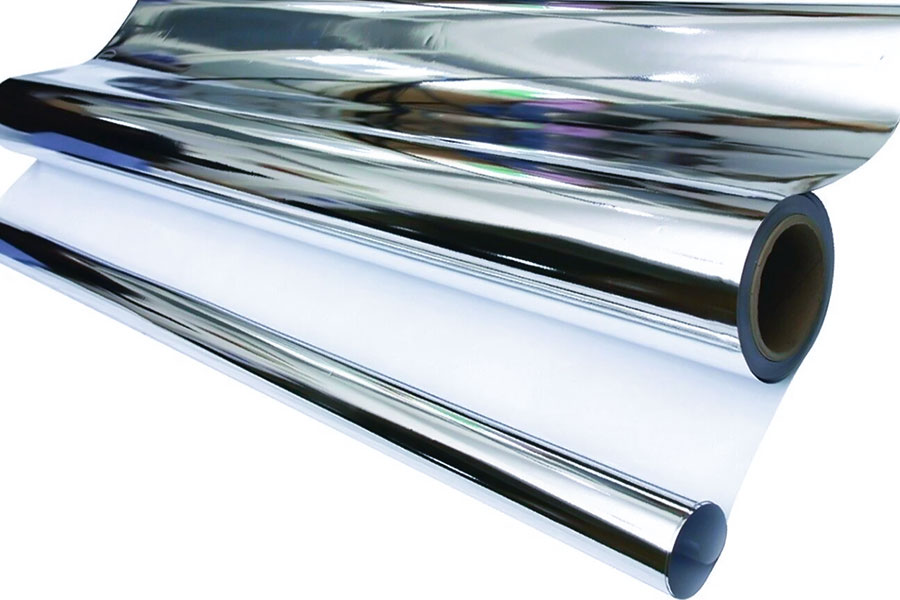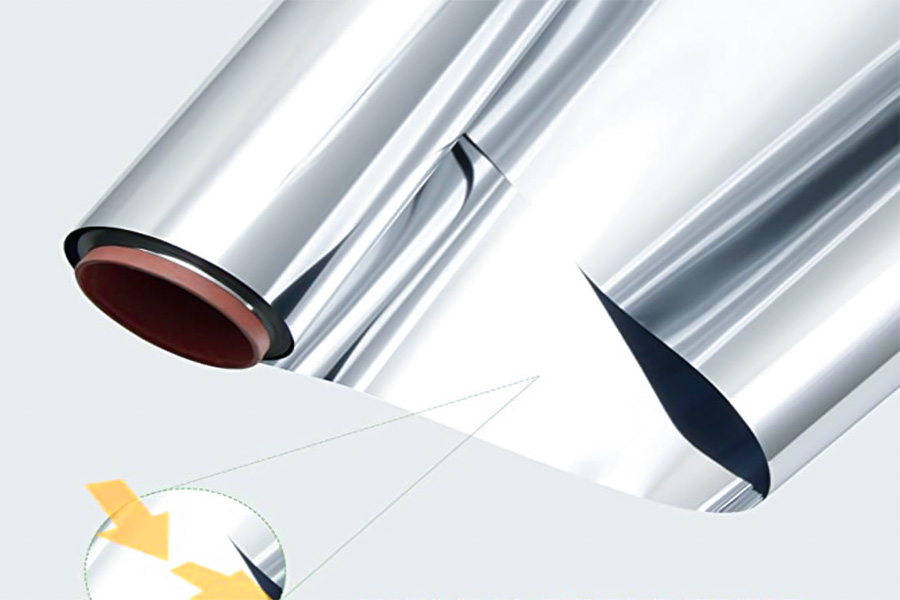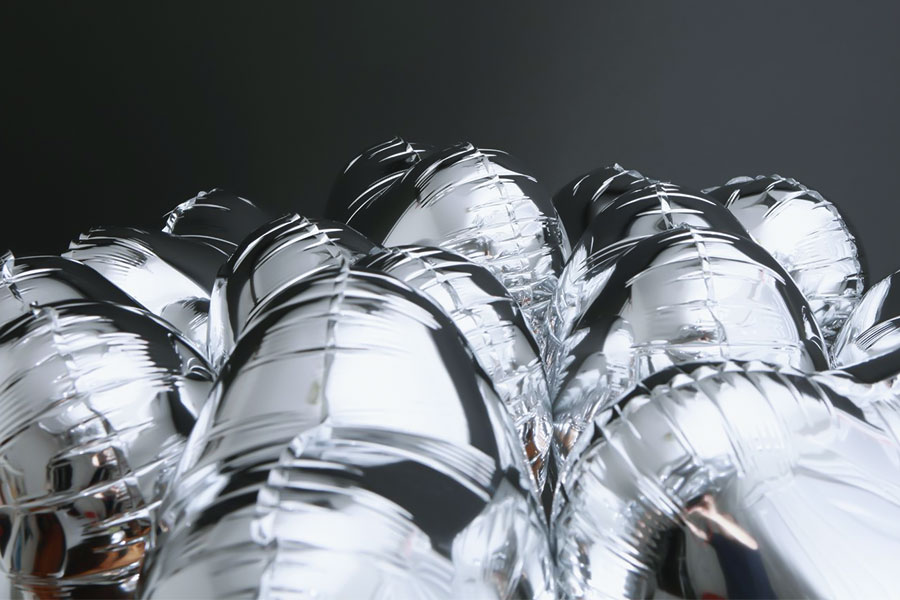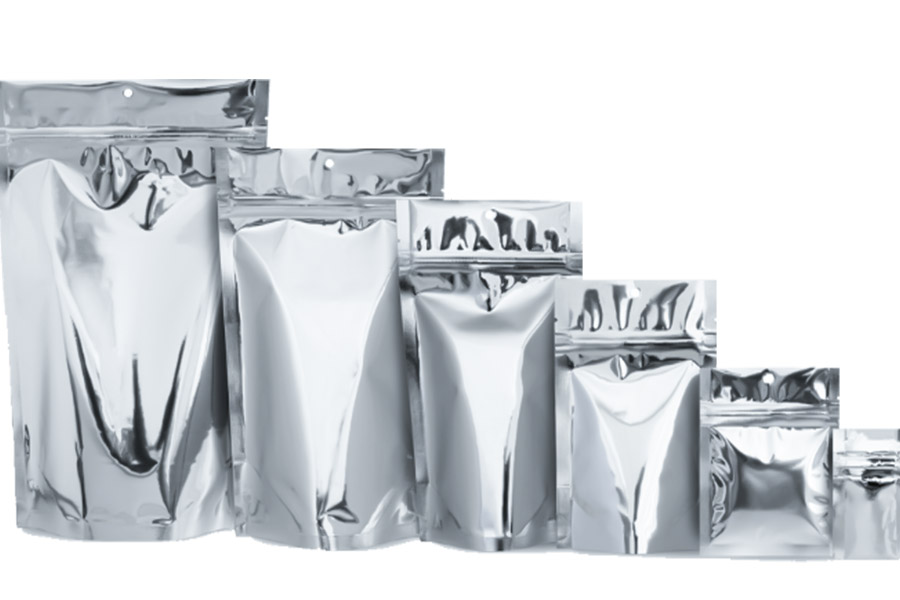You see it every day, but you may not know its true name and power
It may have decorated your child's birthday party, transformed into a shiny letter balloon; it may have provided shelter when you were in trouble outdoors, folded into a life-saving golden "space blanket". Yes, these are allMylar®- a brand you may have been familiar with, but you may not know its real name.
However, when it is no longer in these glamorous or emergency images,polyester mylar(Mylar® is one of the well-known brands, and its generic name is biaxially oriented polyester film, or BoPET)truly shows its irreplaceable "superpower". It quietly integrates into every corner of your life and plays a vital role:
In the laptop computer you tap on,a very thin layer of polyester mylar is tightly wrapped around the delicate circuit board, providing critical insulation protection.
In the bag of fresh coffee beans you brew in the morning,the composite packaging bag made of polyester mylar is faithfully fulfilling its mission - blocking oxygen, moisture and even light firmly, protecting the mellowness and vitality of coffee.
What kind of magical power does this seemingly ordinary material,which is often classified as "plastic mylar" (although strictly speaking, it is made of polyester resin and has far superior performance to ordinary plastics), contain? How does it play such a key role in such a variety of scenarios, from daily decoration to technological protection to food preservation?
A quick comparison summary of the core properties of three mylars materials
| Features | Polyester Mylar (Mylar®/BoPET) | Polypropylene Mylar(BOPP) | Polyimide Mylar(Kapton®) |
|---|---|---|---|
| Dielectric strength | ★★★★☆ Very high | ★★★☆☆ High | ★★★★☆ Very high |
| Tensile strength | ★★★★☆ Very high | ★★★☆☆ Good | ★★★☆☆ Good |
| Temperature range | ★★★☆☆ Good (-70°C~150°C) | ★★☆☆☆ Average | ★★★★★ Excellent (-269°C~400°C) |
| Cost | ★★★☆☆ Medium | ★★★★☆ Low | ★☆☆☆☆ High |
This guide will reveal thefunction of Mylar, showcase the various products made from Mylar, delve into its key properties, and use a real industrial example to show you how it plays an indispensable role in our daily manufacturing work.
Here’s What You’ll Learn:
- Analysis of the “superpowers”of polyester Mylar:How the five key properties (insulation/strength/barrier) subvert yourperception of plastic Mylar.
- Hidden industrial king:Why is the electronics industry (not balloons and snack bags) the #1application scenario for polyester Mylar?
- Life-saving practical case:How 0.188mmthick polyester Mylarcan solve the high-voltage arc crisis of medical equipmentat a cost of less than $1.
- Application list that breaks through cognition:From ancient book protection to building moisture-proofing, 8 unexpected usage scenarios.
- Sharp questions and answers that hit the pain point:the contradictory truth of “recyclable but difficult to recycle”, and why it is more suitable for precision insulation than silicone
Now, uncover how this “super Mylar” quietly supports the modern technological world.

Why should you trust this guide? Practical experience from LS sheet metal workshop engineers
I am an engineer in theLS sheet metal workshop. This guide is not a compilation of theories, but the crystallization of ourpractical experienceaccumulated every day in the sparks flying. Please trust it because:
We build "complete assemblies" rather than isolated parts:On my workbench drawings, metal sheets always coexist with insulation sheets and electronic components. When we design and manufacture, the core consideration is how metal parts canaccurately cooperatewith non-metallic key components such as Mylar to ensure that you get a solution that can be directly and safely assembled, rather than a pile of loose parts that need secondary processing.
Insulation materials (such as Mylar) are our "design DNA":0.25mm thick Mylar insulation sheetis by no means a supporting role. In my eyes, it is as important as metal sheets and is a "firewall" to protect your expensive electronic devices. We arewell versedin its selection (temperature resistance, voltage resistance level),precise die-cutting(considering the fitting surface, tolerance accumulation) and reliable installation (adhesive or snap-on design), because a single failure may lead to a high-voltage arc - this is based on our experience and lessons from handling countless real cases.
Precision serves functional safety:"Precise die-cutting" is far more than just meeting the size standard for us. It means ensuring that the thin piece of Mylar can fit perfectly between the power module and the chassis bottom plate after assembly, without warping or wrinkles, eliminating any hidden dangers that may cause discharge. Our processes (laser parameters, mold design) are optimized around theabsolute reliability of functionality.
Interdisciplinary calculation is a survival instinct:My calculation involves not only the bending radius and K factor of the sheet metal, but also the synchronous calculation of the electrical safety distance. A perfectmetal bendwill still fail if it is too close to the high-voltage terminal. We comprehensively consider the deformation tolerance of metal parts, the actual coverage of the insulation material, and the working environment (humidity, voltage peak), with the goal of building an insulation barrier that exceeds safety standards (such as IEC, UL) in a compact space. This is the deep integration of sheet metal and electrical safety.
This guide is derived from our deep understanding and countless practices ofcomplete products(not just sheet metal parts). It records how we solve the core challenge of "metal and non-metal combination", what risks are avoided, and how much reliability is improved. It is adirect distillationof the models in my computer, the parameter tables in the workshop, the quality inspection reports and customer feedback. If your product involves precision sheet metal and critical insulation,this guide provides spark-tested insights that can be used immediately to improve safety. This is why I,an LS engineer, trust and recommend it.
What is Mylar®? Unveiling the mystery of the "super plastic"
When you hear "Mylar®," you might think of shiny party balloons, space blankets, or the shiny silver lining of food packaging. The name has become so common in everyday life and cutting-edge technology that it's almost synonymous with somekind of magical mylar.But first, remember: Mylar® is a brand name, just like people use "Jeep" to refer to off-road vehicles or "Kleenex" to refer to paper towels. The scientific name of the material it represents is BoPET.
BoPET: From a drop of polyester to a tough film
BoPET stands for biaxially oriented polyethylene terephthalate. In simple terms:
- The basic material:It's a polyester. Yes, it's a "relative" of thepolyester fiber in your clothesand belongs to the same polymer family.
- Key process - biaxial stretching:This is the core difference between BoPET and ordinary plastic film. During the production process, the molten polyester is strongly stretched in two perpendicular directions at the same time (usually the machine's travel direction MD and the cross-machine direction TD).
- The magic of molecular arrangement:Imagine rolling a piece of dough left and right, then forward and backward. This biaxial stretching process greatly stretches and directionalizes the molecular chains inside the film. The molecules are no longer chaotic, but become highly ordered, tightly arranged, parallel to the surface of the mylar.
- Performance transformation:It is this highly ordered molecular structure that gives BoPET (that is, materials such as Mylar®) a series of "super" properties thatsurpass ordinary plastic mylars, transforming it from an ordinary polymer to an engineering material.
Key properties of Mylar®: Why is it called "super"?
It is the unique molecular structure mentioned above that gives Mylar® (BoPET) amazing comprehensive properties:
(1) Excellent electrical insulation:
- This is one of its most important properties in theelectrical and electronic industry.
- It can withstand very high voltages without being broken down by current at an extremely thin thickness (usually a few microns to a few hundred microns).
- Applications:Widely used in capacitor dielectrics, motor insulation, cable insulation tapes, printed circuit board substrates, etc.
(2) Amazing tensile strength:
- For a mylar material, it has very high tensile strength.
- This means that it is extremely strong, not easy to tear or puncture, and has excellent tensile properties.
- Applications:Balloons, kites, high-strength packaging bags, industrial tape substrates, protective materials.
(3) Excellent dimensional stability:
- It has minimal expansion and contraction deformation in environments with temperature changes and humidity fluctuations.
- This is crucial for precision applications because it can maintain precise shape and size without excessive shrinkage or expansion due to environmental changes.
- Applications:Precision instrument labels, optical mylar substrates (such as reflective mylars, brightening mylars), engineering drawings, surveying films.
(4) Excellent chemical inertness:
It can resist corrosion from most chemicals, oils and solvents.
This inertness allows it to remain stable in harsh chemical environments and is not easily dissolved or destroyed.
Applications: Chemical product packaging, chemical corrosion-resistant labels, industrial filter materials, protective coatings.
(5) High barrier properties:
- It hasexcellent barrier propertiesagainstoxygen, water vapor, odor molecules and even light.
- This property makes it an ideal choice for extending the shelf life of food and protecting sensitive contents (such asmedicines and electronic components) from environmental erosion.
Applications:Food packaging (especially snacks, coffee, meat, etc. that need to be isolated from oxygen and moisture), pharmaceutical packaging, moisture-proof packaging for electronic components, and airtight packaging bags.
Mylar®, or BoPET, is a well-deserved name. It elevates ordinary polyester materials to the level of "super mylar" through the exquisite "biaxial stretching" process. It combineshigh strength, high stability, high insulation, high barrier properties, and high chemical resistance, perfectly illustrating how materials science can create macro miracles by changing microstructures. From the packaging bags that protect our food to the insulation materials that support themodern electronics industry, from the shiny balloons that light up the party to the space insulation blankets that save lives, Mylar® is everywhere, silently demonstrating the extraordinary value of this "super plastic" mylar. The next time you see it, think about the highly ordered molecular chains that make up this seemingly ordinary but extremely tough "magic" mylar.

Mylar's Wide Applications: Far More Than Balloons and Snack Bags
With the above-mentioned super powers, Mylar is used in almost all industries.
Overview ofMylar core applicationareas
| Application areas | Core application forms | Core advantages | Typical scenarios/product examples |
|---|---|---|---|
| 1. Electronics and electrical insulation | Sheets, shielding layers, substrates | Excellent dielectric strength, temperature resistance, dimensional stability | Motor/transformer slot insulation, FPC substrates, high-frequency cable shielding |
| 2. Packaging and preservation | Barrier bags, composite mylar | Extremely high gas/water vapor barrier, puncture resistance | Coffee bags, potato chip bags, emergency food long-term storage bags, medical packaging |
| 3. Printing art office | Templates, protective mylar, laminations | High transparency, high strength and durability, dimensional stability, inertness | Silk screen templates, archival protective covers, important document laminations, mounting pads |
| 4. Buildings and homes | Thermal insulation reflective films, moisture-proof layers, airtight layers | High reflectivity, low moisture permeability, high strength, durability | Wall/roof radiation barriers, foundation moisture-proof films, greenhouse insulation layers, airtight seals |
Electronics and electrical (our main battlefield):
Insulation sheet: The first choice for motor/transformer slot/interlayer insulation. It relies on ultra-high dielectric strength and resistance to high temperatures of 130°C+ to ensure long-term reliable operation of the equipment.
FPC substrate: The core of flexible circuits for mobile phones/wearable devices. Dimensional stability, resistance to soldering temperatures, and easy metallization are the key.
Cable shielding: A powerful tool for high-frequency cable EMI protection. Thin Mylar tape provides excellent shielding and flexible protection.
Packaging and preservation (barrier expert):
The core is barrier property: extremely low oxygen/water vapor transmission rate is the foundation of preservation. Potato chips are moisture-proof and anti-rancid, and coffee is anti-caking.
Long-term storage: Priced with oxygen absorbers,Mylar bagsmay safely store dry food for decades, thus being an acceptable solution for emergency supplies. Our thickest version has been tested to last 25+ years.
Art office (long-term protector):
Template: High clarity to allow alignment, high strength and resistance to solvents to allow reuse multiple times, and ready laser/knife mold processability.
Document protection:Archival-grade Mylar(stringently compliant) is dimensionally stable, non-yellowing, and chemically inert, providing a century-level "acid-free" preservation for sensitive documents/pictures.
Buildings and houses (energy-saving invisible shield):
Thermal insulation (radiation shield):Aluminum-coated Mylarhighly reflects infrared heat. Roof/wall applications significantly reduce temperature (documented attic decrease of 15°C) or maintains warmth, reducing energy consumption.
Moisture barrier: Ultra-low water vapor transmission rate keeps walls/foundations from letting moisture in, prevents mold and corrosion, and achieves healthy and durable buildings. Weather-resistance, flame-resistance, and high-strength special models are required.

Case study of real-world application: Creating an "absolutely safe" sheet metal enclosure for tiny medical devices
"In medical devices, 'good enough' is not good enough. The equipment's electrical safety is the final benchmark for the lives of the patients and operators. What may look like a plain sheet metal enclosure may have huge safety problems inside its inner configuration." - This quotation best describes the spirit of medical device design: unyielding safety.
Customer Challenge: A space-restricted high-voltage arcing-prone diagnosis device
Project Background:A medical device firm developed a hand-held blood analyzer as part of the pursuit of radical miniaturization. The physical spacing between its internal high-voltage power module and the specially crafted aluminum alloy sheet metal casing was minimized to a point of criticality (< 3mm).
Dilemma
Certification failure:Safety certification failed - high-voltage arcing was created within a humid atmosphere during certification test by UL - the current went through in the air and jumped from the power PCB board to the metal casing, and the test instantly failed, which resulted in a severe safety hazard.
Design modification dilemma:
Re-designing the circuit board (wider spacing) or increasing the housing size means taking months off from the project procrastination. Along with that comes the huge mold/design change cost, and that is a startup killer.
Myth of material selection: The customer tried to spray insulating paint on interior wall, but the coating thickness was low and corner coverage was insufficient, and therefore an effective insulation barrier could not be created and issues were not resolved.
Solution: Fix system-level issues with an accuracy piece of Mylar insulation sheet
Root cause analysis:The problem's root cause is the poor dielectric strength of air. For extremely small gaps (< 3mm) and wet conditions, air cannot properly insulate high voltage (> 1kV), and arc danger is inevitable. The solution consists of the incorporation of a solid insulation barrier that is reliable.
Proper diagnosis and material choice:We prominently indicate that this is a common electrical clearance (Clearance) and creepage distance (Creepage) issue. The use of 0.188mm thick, UL-listed Mylar (polyester film) insulation sheet is suggested. Its benefits are tremendous:
- Ultra-high dielectric strength:Much superior to air, can efficiently suppress high-voltage arcs.
- Ultra-thin:Nearly zero added device volume, ideal for miniature design.
- Flexible and resistant:Easy to adapt complex curved shapes, excellent temperature and chemical resistance.
- UL certification:Complies with stringent requirements for medical equipment safety.
Integrated design and manufacturing:
- Seamless data connection:Directly use the original 3D CAD data of the customer'ssheet metal shellto accurately generate the cutting file of the Mylar insulation liner.
- Precision processing:Laser cutting or precision die-cutting technology is used to ensure that the liner is 100% accurately matched with the inner wall contour of the shell, all mounting holes, vents, openings, etc., without any burrs or stress points.
- Pre-integrated delivery:What is delivered to the customer is not a bare metal shell, but a "ready-to-use" semi-finished component with Mylar insulation liner precisely fitted in advance. The liner is fixed by a reliable adhesive or physical structure.
Value-added service:This solution greatly simplifies the client's assembly process. Workers only need to install the circuit board directly into this well-insulated component without additional insulation issues.
Final result: Fast certification and accelerated product launch
Dramatic transformation:After installing theMylar insulation pad, the equipment performed perfectly under high humidity and high voltage test conditions, the high voltage arc phenomenon was completely eliminated, and all relevant UL insulation tests were passed at one time.
Quantified benefits:
- Saved timeline:At least 3 months of PCB or housing redesign and verification cycle was avoided, ensuring that the product was launched as planned.
- Significant cost-effectiveness:The Mylar pad solution for a single device costs much less than $1, which is a huge saving compared to redesign (PCB revision, new mold, and delayed costs).
- Improve assembly efficiency:Pre-integrated components increase customer production line efficiency by about 15%, reducing operating steps and potential errors.
- Ensure safety and compliance:Fundamentally solve safety hazards and meet the most stringent safety standards for medical devices.
Core inspiration:
Excellent manufacturing partners provide far more thansheet metal fabrication prices, but also system-level engineering problem-solving capabilities. They can break away from the limitations of single-part manufacturing and deeply understand customers' design challenges and safety needs from the perspective of the entire product. By cleverly applying auxiliary materials such asMylar insulation sheets, combined with sophisticated design, manufacturing and pre-integration capabilities, they can solve key system-level engineering problems for customers at extremely low costs and high efficiency, becoming an indispensable partner for the success of their products.

FAQ - Answers to your more questions about Mylar
1.Is Mylar scratch-resistant?
Mylar has good wear resistance, but it is not completely scratch-proof. Its core advantage lies in its excellent toughness and strength, rather than its extremely high surface hardness. Therefore, although it can withstand a certain amount of friction and mild scratches, sharp objects may still leave scratches on its surface. For this reason, in applications such as protecting polished metal surfaces, Mylar film is often designed as a sacrificial protective layer - its own toughness is enough to protect the valuable surface below during processing, transportation, etc., and even if it is scratched or worn, its protective purpose has been achieved.
2.Can Mylar be recycled?
In terms of material composition, Mylar itself (based material is PET, polyethylene terephthalate) is recyclable. It is a common No. 1 recyclable plastic, the same material as beverage bottles. However, actual recycling faces significant challenges: ① Morphological problem: The processing equipment of most municipal or community recycling facilities is mainly aimed at rigid plastic containers (such as bottles and boxes), and it is difficult to effectively sort and process thin and soft film-like plastics. ② Composite material problem: Many Mylar products (such as food packaging bags, balloons, and insulation materials) are multi-layer structures composited with other materials (the most common is aluminum foil). Separating the PET layer from these composite materials for purification and recycling is extremely complex both technically and economically, and is usually beyond the capabilities of conventional recycling processes. Therefore, although the material itself is theoretically recyclable, the actual recycling rate is very low, requiring special recycling projects or processing technologies.
What is the difference between Mylar and Silicone?
Mylar and Silicone are two types of materials with very different properties and uses:
Mylar (polyester film):It is a tough, high-strength engineering plastic film known for its excellent dimensional stability, insulation, barrier properties (gas and moisture barriers) and mechanical strength. It is usually in rigid or semi-rigid sheets, smooth to the touch, like a very tough "plastic paper" or sheet. It is mainly used in electrical insulation (such as motors, transformers), packaging barriers (such as food, medicine), reflective films (such as space blankets), labels, audio/video tape bases, and surface protection that requires dimensional stability and structural support.
Silicone (silicone/organic silicone):It is a soft, elastic synthetic rubber-like polymer. Its notable features are extremely wide temperature resistance (high and low temperature resistance), excellent flexibility, good chemical inertness, biocompatibility and excellent sealing properties. It is usually made into a soft gel, liquid (before curing) or rubber-like solid. It is mainly used in seals, gaskets, kitchen utensils (baking trays, spatulas), medical devices, baby pacifiers, lubricants, mold making, and parts that require flexibility and temperature resistance.

Summary
Thevalue of Mylargoes far beyond its glamorous appearance. In the field of industrial manufacturing, it is the unsung hero that ensures product safety, reliability and durability. A deep understanding and effective application of Mylar is the key measure of whether a manufacturer has the ability to systematically solve complex problems.
Is your product design facing the challenge of complex electronic integration? Are you troubled by the electrical safety or internal protection of the sheet metal housing? It's time to say goodbye to scattered procurement!
- Find a partner who truly understands the overall needs of your product!
- LS provides excellent onlinesheet metal processing servicesand can tailor a full set of integrated solutions including Mylar insulation solutions for you.
- Upload your design mylars now and get aprofessional quotewith value-added suggestions!

📞 Phone: +86 185 6675 9667
📧 Email: info@longshengmfg.com
🌐 Website:https://lsrpf.com/
Disclaimer
The content of this page is for informational purposes only.LS SeriesNo representations or warranties of any kind, express or implied, are made as to the accuracy,completeness or validity of the information. It should not be inferred that the performance parameters, geometric tolerances, specific design features, material quality and type or workmanship that the third-party supplier or manufacturer will provide through the LS network. This is the responsibility of the buyerAsk for a quote for partsto determine the specific requirements for these parts.please Contact us Learn more information.
LS Team
LS is an industry-leading companyFocus on custom manufacturing solutions. With over 20 years of experience serving more than 5,000 customers, we focus on high precisionCNC machining,Sheet metal fabrication,3D printing,Injection molding,metal stamping,and other one-stop manufacturing services.
Our factory is equipped with more than 100 state-of-the-art 5-axis machining centers and is ISO 9001:2015 certified. We provide fast,efficient and high-quality manufacturing solutions to customers in more than 150 countries around the world. Whether it's low-volume production or mass customization,we can meet your needs with the fastest delivery within 24 hours. chooseLS TechnologyIt means choosing efficiency, quality and professionalism.
To learn more, please visit our website:www.lsrpf.com






